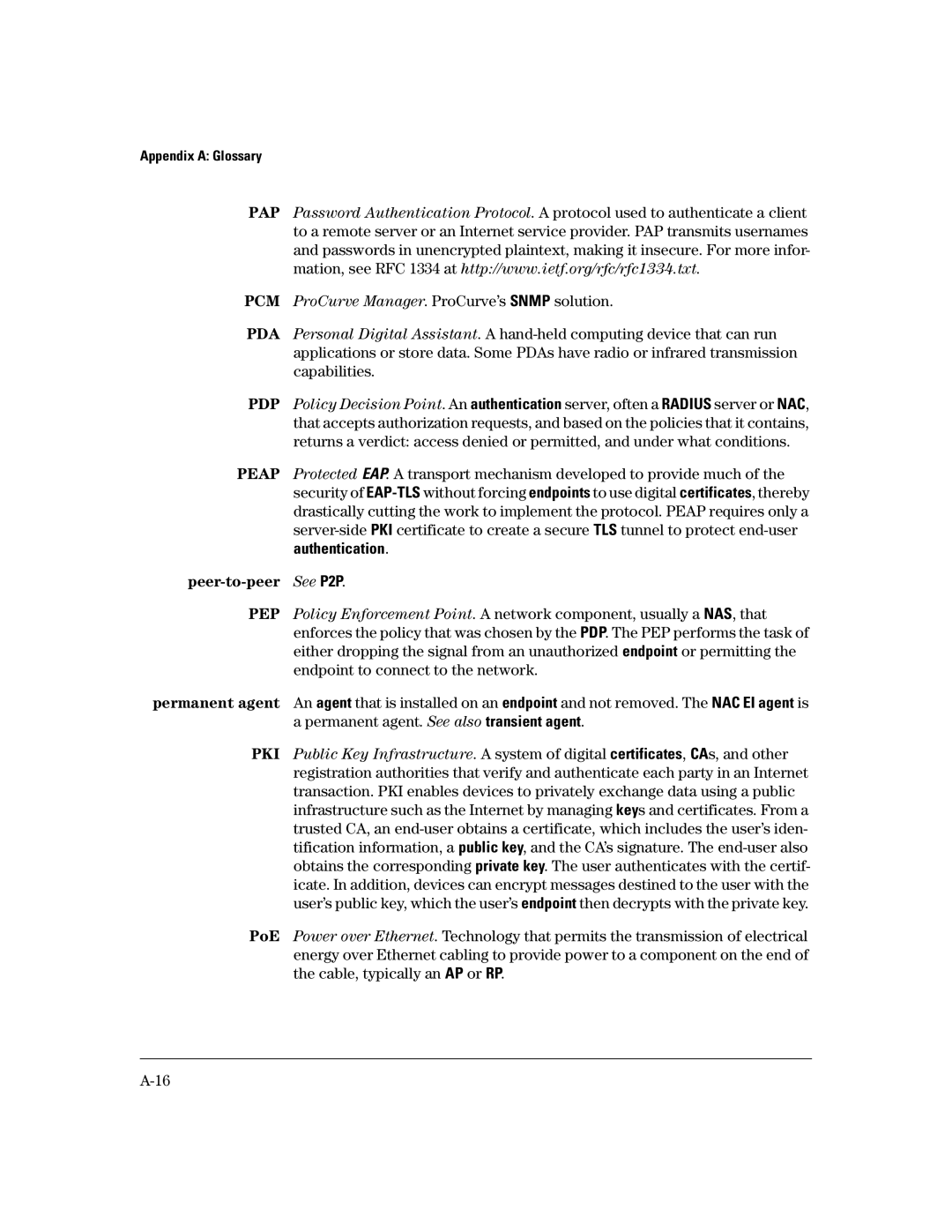Appendix A: Glossary
PAP | Password Authentication Protocol. A protocol used to authenticate a client |
| to a remote server or an Internet service provider. PAP transmits usernames |
| and passwords in unencrypted plaintext, making it insecure. For more infor- |
| mation, see RFC 1334 at http://www.ietf.org/rfc/rfc1334.txt. |
PCM | ProCurve Manager. ProCurve’s SNMP solution. |
PDA | Personal Digital Assistant. A |
| applications or store data. Some PDAs have radio or infrared transmission |
| capabilities. |
PDP | Policy Decision Point. An authentication server, often a RADIUS server or NAC, |
| that accepts authorization requests, and based on the policies that it contains, |
| returns a verdict: access denied or permitted, and under what conditions. |
PEAP | Protected EAP. A transport mechanism developed to provide much of the |
| security of |
| drastically cutting the work to implement the protocol. PEAP requires only a |
| |
| authentication. |
| See P2P. |
PEP | Policy Enforcement Point. A network component, usually a NAS, that |
| enforces the policy that was chosen by the PDP. The PEP performs the task of |
| either dropping the signal from an unauthorized endpoint or permitting the |
| endpoint to connect to the network. |
permanent agent | An agent that is installed on an endpoint and not removed. The NAC EI agent is |
| a permanent agent. See also transient agent. |
PKI | Public Key Infrastructure. A system of digital certificates, CAs, and other |
| registration authorities that verify and authenticate each party in an Internet |
| transaction. PKI enables devices to privately exchange data using a public |
| infrastructure such as the Internet by managing keys and certificates. From a |
| trusted CA, an |
| tification information, a public key, and the CA’s signature. The |
| obtains the corresponding private key. The user authenticates with the certif- |
| icate. In addition, devices can encrypt messages destined to the user with the |
| user’s public key, which the user’s endpoint then decrypts with the private key. |
PoE | Power over Ethernet. Technology that permits the transmission of electrical |
| energy over Ethernet cabling to provide power to a component on the end of |
| the cable, typically an AP or RP. |
